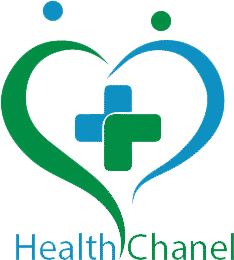What Is Trichotillomania?
Trichotillomania, also known as “hair-pulling disorder,” is a condition where individuals feel an overwhelming need to pull out hair from their scalp, eyebrows, eyelashes, or other parts of their body. This repetitive action can lead to bald spots, damaged hair follicles, and emotional turmoil.
Some misconceptions even associate it with “trichotillomania (hair follicle parasite).” However, it’s important to note that trichotillomania has no connection to parasites. Instead, it is classified as a mental health condition under obsessive-compulsive and related disorders.

What Causes Trichotillomania?
While the exact causes of trichotillomania aren’t fully understood, research points to a combination of genetic, neurological, and environmental factors. Here’s a closer look:
Genetics:
A family history of mental health conditions or compulsive behaviors can increase the likelihood of developing trichotillomania.
Brain Chemistry Imbalances
Dysregulation of brain chemicals, such as dopamine or serotonin, may play a role in triggering compulsive behaviors like hair pulling.
Emotional Triggers
Stress, anxiety, boredom, or even excitement can act as triggers for hair-pulling episodes. In some cases, people find the act soothing during high-stress moments.
Causes in Adults
Trichotillomania causes in adults may differ slightly from those in children. Adults often develop the disorder as a coping mechanism for unresolved trauma, chronic stress, or other mental health challenges.
Trichotillomania Symptoms
Recognizing the symptoms of trichotillomania is key to seeking help early. Some of the most common hair pulling syndrome include:
- Repeatedly pulling hair from the scalp, eyebrows, eyelashes, or other areas.
- Noticeable bald patches or thinning hair.
- A sense of tension before pulling hair, followed by relief or gratification afterward.
- Avoiding social situations due to embarrassment over hair loss.
- Chewing, biting, or playing with pulled hair.
How to Stop Trichotillomania
Managing trichotillomania can be challenging, but it’s entirely possible with the right strategies. Here are some actionable steps to reduce the urge to pull hair:
- Identify Triggers:
Keep a journal to track when and where you feel the urge to pull hair. This can help you recognize patterns and work toward avoiding those situations. - Create Barriers:
Wearing gloves or keeping your hands occupied with fidget toys can reduce the impulse to pull. - Practice Stress-Relief Techniques:
Incorporate mindfulness, meditation, or exercise into your daily routine to lower stress levels. - Seek Professional Help:
Therapists trained in behavioral therapy can help you develop strategies to manage compulsions effectively.
Trichotillomania Treatments
There are several hair pulling disorder treatments available, often involving a combination of therapy, medication, and self-help techniques. Here are the most common approaches:
Cognitive Behavioral Therapy (CBT)
A specialized form of CBT called Habit Reversal Training (HRT) is highly effective. It teaches individuals to recognize triggers and replace hair-pulling with healthier behaviors.
Medication
Although there is no specific trichotillomania medication, some medications like selective serotonin reuptake inhibitors (SSRIs) may help manage underlying anxiety or depression associated with the disorder.
Support Groups:
Joining a community of others who understand your experience can provide emotional support and practical advice.
Trichotillomania Hair Regrowth
One of the most common concerns for people with trichotillomania is whether their hair will grow back. The good news is that hair regrowth due to this disorder is possible in most cases, especially if the hair follicles remain intact.
To encourage regrowth:
- Avoid Further Damage: Stop pulling to give your follicles a chance to heal.
- Use Scalp Treatments: Products with ingredients like biotin, keratin, or castor oil can nourish the scalp and stimulate hair growth.
- Consult a Dermatologist: For severe cases, a dermatologist can recommend treatments such as topical minoxidil.
If the hair follicle is permanently damaged, hair regrowth may not occur, and options like hair transplants could be explored.
Summary
Trichotillomania is more than just a bad habit—it’s a real mental health condition that deserves understanding and treatment. If you or someone you know struggles with hair-pulling, start by exploring the causes, symptoms, and available treatment options. Whether you’re curious about what causes trichotillomania, want to learn about effective treatments, or are looking for ways to encourage trichotillomania hair regrowth, taking the first step toward help can make all the difference.

